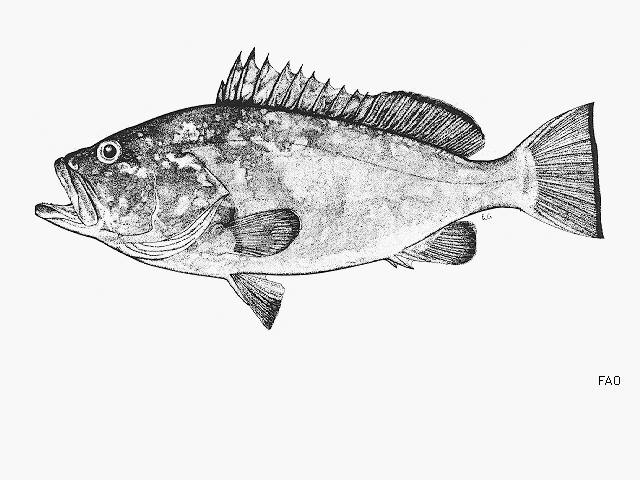| Epinephelidae (Groupers) |
| 53.5 cm SL (male/unsexed) |
|
demersal; marine; depth range - 107 m |
| Western Central Pacific: known only from a single specimen caught off the north coast of Northern Territory, Australia and landed at Darwin. |
|
Dorsal spines (total): 11-11; Dorsal soft rays (total): 16-16; Anal spines: 3-3; Anal soft rays: 8-8. Distinguished by the following characteristics: yellowish brown body color, shading to yellowish ventrally; small faint irregular pale spots scattered over the head and body; yellowish brown dorsal and caudal fin with black posterior margin; traces of white line along the distal margin of soft dorsal and anal fins; distally blackish pectoral and pelvic fins; depth of body contained 2.8 times in SL; head length 2.6 times in SL; convex interorbital area; almost straight dorsal head profile; rounded preopercle angle with shallow indentation above angle and without enlarged serrae; straight upper edge of operculum; maxilla reaching almost to vertical at rear edge of eye; posterior nostrils 2.5 times larger than anterior nostrils; posteriorly rounded maxilla, with prominent angle on lower edge; small anterior canines in jaws; 3-4 rows of small teeth on midlateral part of lower jaw (Ref. 89707). |
| Found on the continental shelf (Ref. 75154). Only a single specimen has been caught by hook and line at a depth of 107 m (Ref. 5222). Minimum depth from Ref. 58018. |
|
Data deficient (DD); Date assessed: 18 November 2016 Ref. (130435)
|
| harmless |
Source and more info: www.fishbase.org. For personal, classroom, and other internal use only. Not for publication.

